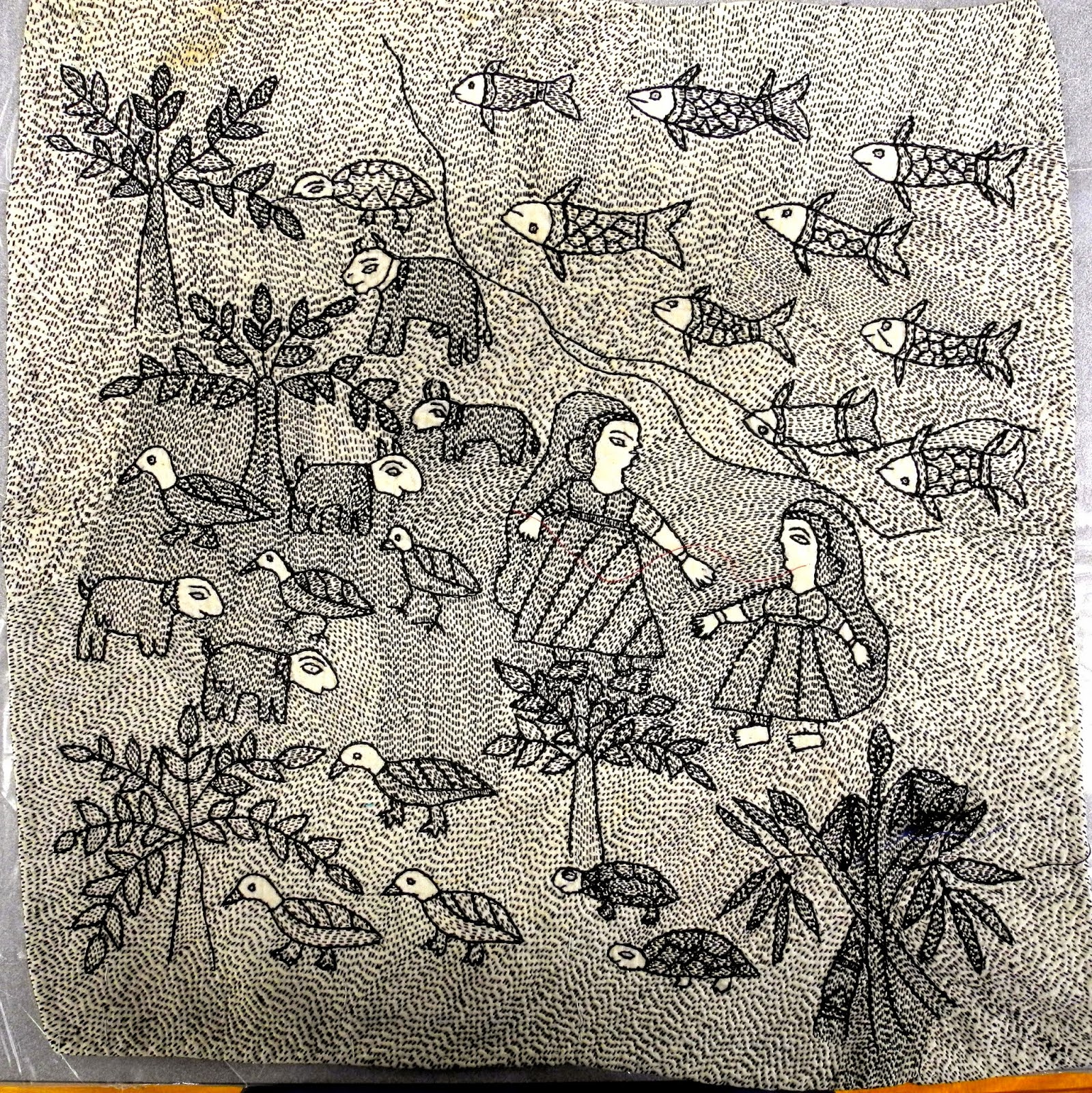It was 5 days with an incredibly generous instructor. Dorothy explained that we are always leaving our marks, and that over the 5 days we would become more aware of them, and notice them everywhere around us.
One of the first techniques we learned to make marks was through Kantha stitch. It is a technique that Dorothy learned about while in Bihar, a rural area in India. Kantha means "rags". It was a method developed to reuse old clothing or fabrics - mending while making it a lovely piece.
As in all very poor areas, fabric is precious, so it is mended over and over so it can still be used. Some of the pieces are started by a mother and then passed down over generations to continue the Kantha stitching.
Dorothy had some wonderful examples. Here are a few - they include social commentary, as they illustrate women in the street, needing a safe place to go for medical care. They are examples of using different threads on different fabrics - but they all use the same pattern. Starting with the upper left hand corner and going clockwise: white thread on black fabric, black thread on white fabric, colored threads on white fabric and colored threads on black fabric.
Part of the workshop includes learning to make books with your work, so our first project was to make a wrapping for one of the books, using Kantha stitching. I've never been much of a stitcher, but I was soon hooked. Dorothy encouraged us to carry our stitching with us everywhere, and once I started doing that, it was hard to stop stitching!
I started my book wrap on a very dense black fabric, and after 2 days realized it was taking forever because it was so hard to stitch through! I started over with a Kona cotton, and the needle went through it effortlessly.
On the last day we were able to put all of the book wraps on the table and enjoy looking at how different our styles and subject matter were.
Here are a couple more images from Dorothy's samples:
 |
| Notice the shadows from the trees around the woman and child and some animals? |
 |
| This detail image shows how different directions of the same stitch added depth and complexity. |
 |
| This is the same image, but white thread on black. I am really drawn to the black and white stitching. The graphic quality is appealing. |
I will write additional posts about the workshop in the next few weeks. I'm off to stitch!


Hi Jeanne,
ReplyDeleteLooks like it was a great workshop. I love hand stitching. I have since I was a small child, but have only in the last year given myself the permission to pursue it again. In the past my tendency was to carry around knitting or crochet. But after watching one of my students at Snow Farm carry her hand stitching around wherever she went I became hooked as well! Can't wait to read your next post!!
We'll have to get together to stitch some time! It is really addicting. My stitches look completely different than the tiny ones in the examples above. It's probably like quilters who can get 12 stitches to the inch, where I can get 8. We'll just have to make our own marks and not try to be anything but ourselves, right? I'm going to be doing more contemporary designs as well.
DeleteI'm glad you got to go to the workshop--must have been inspiring and plain fun. I fell in love with (what I call) the chicken scratch stitch in a Susan Shie class several years ago. Seeing your pictures makes me want to get back to it. Are you familiar with Paula Kovarik's black stitches on white (by machine)? She does fascinating work--her name dot com.
ReplyDeleteIt was fun and I hope to use it in my work. Paula Kovarik's work is wonderful!
ReplyDeleteLong a fan of Dorothy Caldwell, I would love to take a class with her. I love what you did in the class and know this class will influence and inform your work in ways you can't yet imagine!
ReplyDelete